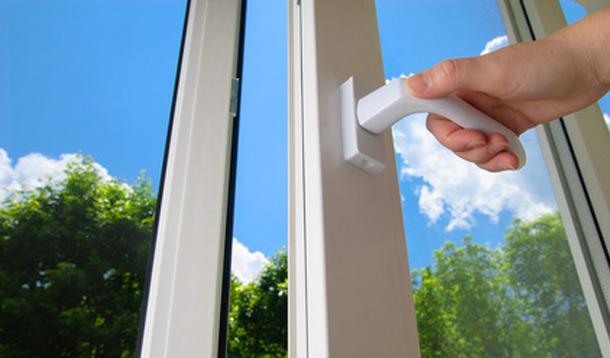
Knock knock.
(Who’s there?)
Hatch.
(Hatch who?)
Bless you! Ugh, spring allergies are the worst.
It’s that time of year again: flowers are blooming, bees are buzzin’ and my entire family is going through wholesale-sized boxes of tissues every week, thanks to spring allergies.
Not only are people dealing with the dust houses collect over the winter, but once you open up the windows to bring in that beautiful, fresh spring air, you’re also letting all that pollen in. No wonder my family sounds like a sneeze symphony.
Thankfully, it’s not too difficult to improve your home’s air quality and relieve allergy and asthma symptoms. And even if you don’t suffer from allergies or asthma, poor air quality can lead to headaches, nausea, tiredness, and more. It’s worth ensuring the air you’re breathing is clean!
Here are five easy ways to improve your home’s air quality:
Check for black mold around windows and in showers and bathtubs and clean using this method. If you do notice mold, add 1 cup of borax to 2L of warm water, and wearing a mask, clean away any mold you find.
Always run bathroom fans for 20 minutes (or longer) after showers and baths to make sure all the humid, mold-friendly air is being sucked out (year-round, humidity levels in your home should be between 30-50%). In the summer months, a dehumidifier is a good way to cut down on humidity.
You’ve probably been told that carpets are an allergic person’s worst enemy, but that’s not actually the case. Carpets can keep allergens contained, and as long as you have a great vacuum cleaner, you’re golden. Be sure your guests and family members remove their shoes to prevent allergens from being traipsed through your house.
The Dyson Cinetic DC77 will blow your mind when you see how well it picks up dirt, debris, and dust on hard floors and carpeting. It’s certified allergy and asthma-friendly by the Asthma Society of Canada, so you know it rocks. I gave it a try and I’m not kidding when I say its power is impressive. I own an older model Dyson that I love almost as much as I love my kids, but this new model is even better.
When I tested it out, I had just vacuumed my main floor (I have a mix of hardwood, carpet and area rugs) the day before, and this is what happened when I used the Dyson Cinetic DC77:
Take a look at my living room. It looked clean, it felt clean...so I assumed it was clean.
Then I took the vacuum for a spin.
Wait? Can you see what I see? All the dust came from that small area of carpet I had just vacuumed the day before! Where did all that come from? Gross!
And this is what was collected from just my main floor. The one I had just cleaned. Or thought I had cleaned.
The Dyson Cinetic DC77 has a whole-machine HEPA filter, so it actually expels cleaner air. The whole machine is completed sealed, so when it sucks up all the nasty microscopic dust, allergens, and bacteria hanging around your floors, it stays in. And it not only sucks up every last allergen on your floors, but leaves air cleaner, too. What’s more, there are no filters to replace or clean.
All those things you’re spraying, plugging in, and using to clean are absolutely full of toxins. Clean up your cleaning routine and everyone will breathe easier. You can clean almost your entire home with just vinegar and baking soda and you can make this recipe for my all natural allergen reducer:
1 cup rubbing alcohol
10-15 drops of pure eucalyptus essential oil
10-15 drops of pure tea tree oil
Combine all ingredients in a spray bottle for easy use.
To deodorize carpets, do the following:
Indoor air can be 100 times more polluted than outdoor air. Isn’t that incredible? Even just a small portable unit will make huge changes to air quality. You can move it from room to room to help keep airborne allergens and dust to a minimum. The added bonus for me was a reduction in my husband’s snoring, because his sinuses are no longer constantly irritated by allergens.
Do you have any more tips to share? I always love hearing new ideas!
